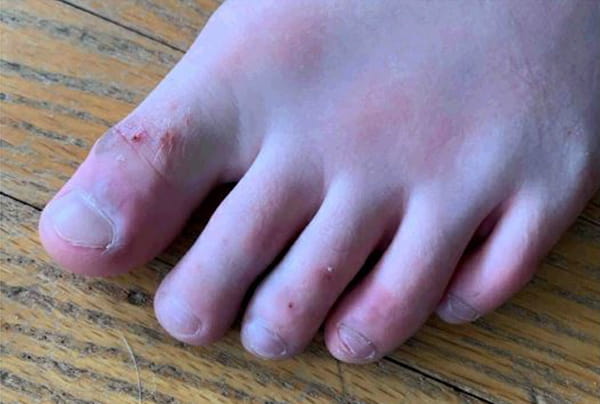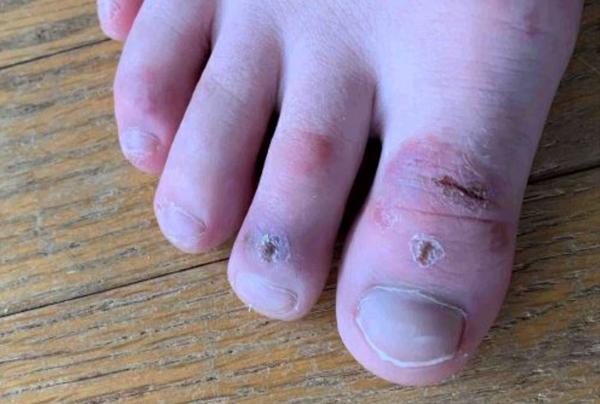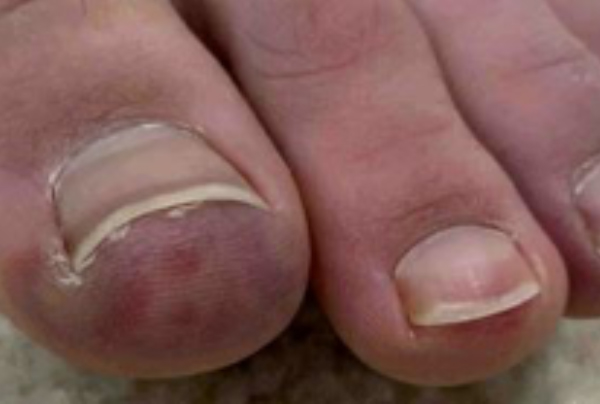Active COVID-19, Clinical Pathway — All Settings
COVID Toes
Acral changes that are pernio-like or chilblains-like have been reported in children with suspected COVID-19 or exposures to COVID-19 and mild or no other symptoms. They affect the feet and toes more than the hands and fingers. They have been described as red or purple patches, sometimes with erosions or central graying. They are often associated with coolness of the area, mild pain and sometimes mild itch. Skin biopsy often shows features on histology similar to pernio.
The nature of this phenomenon is still being investigated. Most children with these acral changes have tested negative for COVID-19 by PCR but most have high risk exposures in the region they live or the people they have been exposed to regularly. The typical work-up for this change is the workup for pernio which includes: Anti-nuclear antibody testing, Rheumatoid Factor, D-Dimer, Fibrinogen, CBC with diff, C3, C4, ES, CRP, anti-phospholipid antibodies. Since some have tested positive to COVID-19 recommend COVID-19 PCR and COVID antibody testing IgG and IgM because there is a thought that this is a late effect of the virus. Many antibody tests are still negative. Skin biopsy is recommended in more severe cases.
Therapy is usually supportive. For painful lesions can consider Class I or II topical steroids for 2 weeks like clobetasol or fluocinonide ointments. For more severe cases consideration of aspirin, nifedipine, hydroxychloroquine.
Society of Pediatric Dermatology and Pediatric Dermatology Research Alliance
Pediatric Registry for this acral ischemic change


